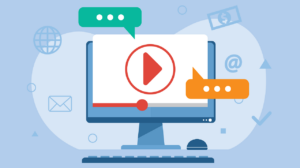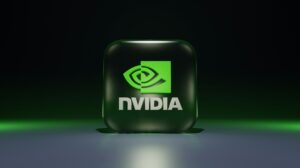Content is everywhere – in your emails, on your website, on your blog, even on your social media channels. We’re often guilty of churning out content just because we know we have to, with no regard to the why.
Why are you writing and publishing? How does every piece of content you put out there help you meet your business goals?
Content can fulfill a lot of roles and help you meet a lot of goals. Let’s see how to measure the way each piece of content lives up to the expectations.
The Content KPIs to Measure at Every Stage of the Funnel
Content Performance in the Awareness Stage
Content created at this stage is ideal for new companies who want to make potential buyers aware (hence the name) of their existence. Measuring awareness is a bit tricky because there’s no way to definitively say how much ROI it will have in the long run.
However, it’s a necessary first step. The metrics to track for this stage are:
- Organic search impressions or how many times your content appeared in SERPs (Search Engine Results Pages). If you write optimized content than this is your first queue that you’re doing something right. Of course, impressions without clicks mean that you probably need some more work on your headlines or your meta descriptions, but it’s a good start. It means that people see your brand out there and the next time you pop up in search results, your name will already feel familiar and more trustworthy.
- Views and reach on social media – the same as above, your content made its way under some eyes. Now, if your reach is higher than the average organic reach for a certain social media platform, you’re doing something right. If it doesn’t bring other results (like clicks or engagement), it might need some fine-tuning.
- Share of Voice (SoV): this is a term borrowed from PR and extended to any measurable metric in any type of marketing tactic. It measures how often your brand shows up in search results compared to your competitors’. The formula is: (number of mentions of your brand/total number of brand mentions (yours + your competitors’) x 100 = SOV.
- New users on your website: when you reach new users, who’ve never heard of you before, it’s obvious that your brand awareness is on the rise. You can easily track this metric in Google Analytics. Take a look at the landing page new users came through to find out which of your pieces of content is best at increasing your brand awareness.
Content Performance in the Engagement Stage
OK, things are getting more interesting now. People already know your name and you’ve got their interest. Now let’s see how you can measure this interest:
- Clicks: whether it’s clicks from SERPs or from social media, they all mean the same thing: your content is engaging and you’ve got the numbers to prove it. You can measure the clicks under the “Sessions” tab in Google Analytics. Go a step further to see which pieces of content brought you the most clicks – you can check that in the “Acquisition” tab.
- Bounce rate: OK, you’ve got their interest. But for how long? Bounce rate (also measurable in Google Analytics) tells you how many of the people who clicked on your links bounced back to search results without visiting another page. When this happens, it’s typically because your content didn’t live up to the promise of the headline. It’s important to correlate bounce rate with another metric:
- Time spent on page: most CMSs have plugins that display “read time” next to any piece of content. While it’s true that most people scan and skim content, if the average time spent on page is much lower than the read time (a few seconds), maybe it’s time to revisit that page.
Content Performance in the Purchase/Conversion Stage
We have finally arrived to the metrics that rule them all: the ones you can track with actual money. The content that takes readers to this stage is your goose with golden eggs. Take care of it and try to create as many similar pieces as possible.
Here’s what you can track at this stage:
- Purchases: if you sell something directly from your website, you can easily see which piece of content got people buying. You just have to add a “visited page title condition” in Google Analytics to track which of your content pieces are your best sellers. Speaking of this:
- ROI: when you know which of your content pieces got people buying, you can easily calculate content ROI based on how much you paid for the pieces that made the sales.
- Goal completion: if you’re selling service, purchases are a bit harder to track – but not impossible. All you have to do is create some goals in Google Analytics and then see which content pieces helped complete them. Goals can be anything that matters to your business: downloading an eBook, signing up to a newsletter, filling in a contact form, and so on.
Final Thoughts
Yes, content can help you meet all sorts of goals. Be careful, though: a piece of content can rarely do everything in a sales funnel. To expect it to take people all the way from awareness to purchase is a mighty tall order. I’m not saying it can’t happen – I’ve seen it happen for our agency and for a lot of our clients.
But those are rare occurrences. Ideally, each piece of content you put out there should be optimized for one stage of the funnel and designed to help people move to the next.
Need help with content that meets goals? My team of expert writers and I are just a click away!





